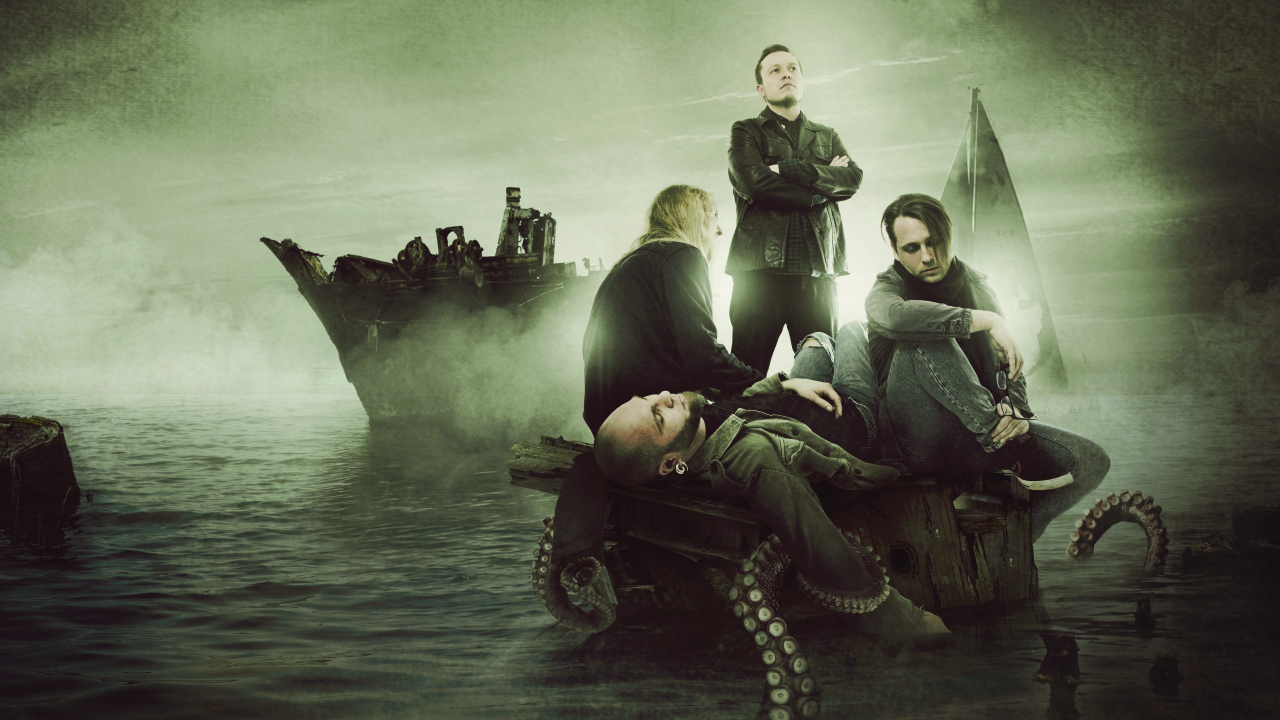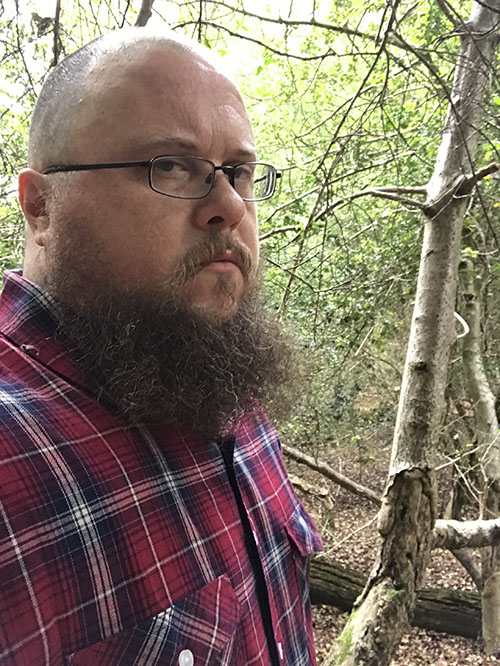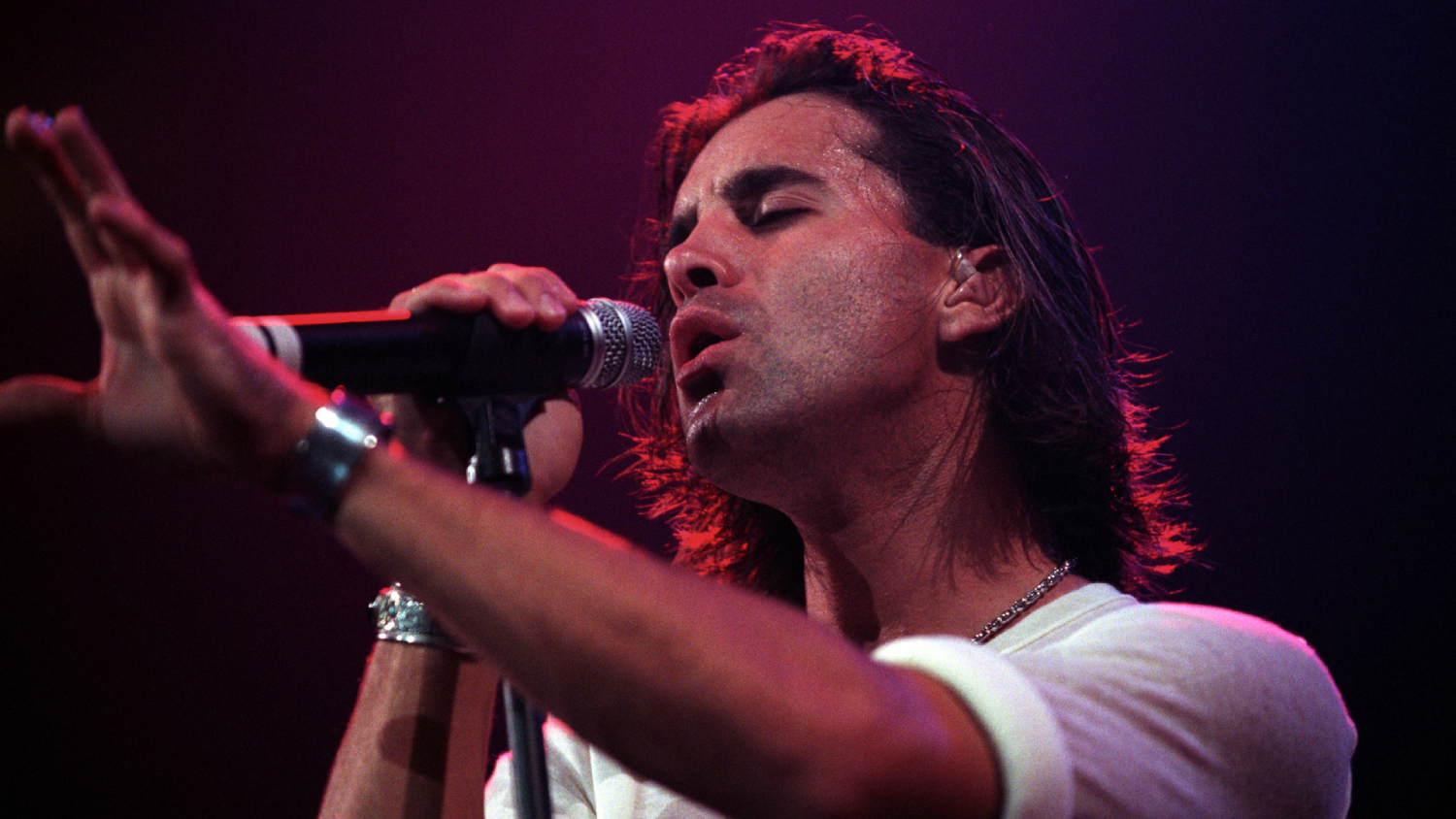Subterranea: Ahab - "Everybody wants us to do HP Lovecraft..."
Rising from the depths of the funeral doom scene, nautical obsessives Ahab are proving to be in a league of their own.

Ahab launched in Germany a decade ago with one singular obsessive purpose: to pay tribute to Herman Melville’s classic novel Moby-Dick – the tale of Captain Ahab’s doomed voyage of vengeance to slay the titular white whale – in a musical setting of epic funeral doom.
To that end, 2005 demo The Oath brought them to the attention of Napalm Records, who released their 2006 full-length debut, The Call Of The Wretched Sea, a killer opening gambit that nailed Ahab’s foundational impetus and had a remarkable impact way beyond their subgenre.
‘Funeral doom’ had emerged in mid-90s Finland, spearheaded by fearsome cult names like Thergothon, Skepticism, Unholy and Funeral (natch), dragging the gothic doom-death of early My Dying Bride deeper (and slower) into abject despondency and remote inaccessibility. By the early 00s, it was a blossoming global scene, with homemade CD-Rs circulating around devoted acolytes on pre-Wi-Fi message boards; for the four young musicians who became Ahab in 2004, discovering this close-knit underground and weird new sound was a revelation.
Talking in the old-world wooden basement of Stuttgart bar-cafe Kap Tormentoso, where tables are scattered with seaweed nibbles (and ashtrays!) and walls are hung with paintings of ships on stormy seas, guitarist Christian Hector remembers his and vocalist/guitarist Daniel Droste’s early motivations for founding Ahab.
“It was around the time we started listening to extreme doom like Tyranny, Esoteric and Shape Of Despair,” he says. “We both wanted to do one-man funeral doom projects, but Daniel had this song and I had this idea of doing the Moby-Dick stuff, and I listened to his song and was like, ‘Let’s do it together!’ It just fit perfectly.”
“His first idea was to record one album and never play live,” reveals Daniel, nodding accusatorially in Christian’s direction. “It was just about doing something special. We could have done death metal or black metal, but it was nothing special anymore. Back then the doom scene was totally new for us; it was totally different music, was like an ignition.”
Ahab toured the debut enthusiastically, so why the initial reluctance to play live? “Honestly, I thought it was cooler!” chuckles Chris. “There were all these secret little projects in funeral doom back then, and I was like, ‘Man, let’s do one of them.’ For me it was being a fan of new sounds, especially Esoteric’s The Pernicious Enigma album, with its weird production like being in a cave or something – a very bad cave! – I was like, ‘What the fuck is this guy doing?!’”
Sign up below to get the latest from Metal Hammer, plus exclusive special offers, direct to your inbox!
One event between the demo and the album convinced Chris and Daniel that Ahab had more potential than they’d realised: the addition of the band’s trump card, drummer Cornelius Althammer. “I played him our demo and asked if he’d like to help us record the album,” recalls Daniel. “He was like, ‘Ooh, I’ll have to buy some special cymbals.’ We said, ‘Man, he’s so nerdy he has to be in the band!’ He’s a music maniac. He’s played cello for 20 years, and can play guitar faster than either of us. He plays a right-handed guitar and he’s left-handed! He’s a genius.”
Maintaining the Moby-Dick focus, Ahab’s second album, 2009’s The Divinity Of Oceans, tackled the novel’s true-life inspiration, Owen Chase’s first-hand account The Wreck Of The Whaleship Essex from 1821. The band were reluctant to abandon their conceptual corner-stone, but on 2012’s The Giant Ahab branched out to tackle Edgar Allan Poe’s 1838 whaleship disaster novel The Narrative Of Arthur Gordon Pym Of Nantucket, a likely influence on Melville’s work. On their career-best new album, Ahab stick to their theme of historical shipwrecks, interpreting William Hope Hodgson’s 1907 nautical horror novel, The Boats Of The Glen Carrig, a Sargasso survivalist yarn suffused with sea monsters. The aesthetic obsession is cast in stone; Chris and Daniel promise the band’s MO will always involve literary depictions of oceanic dread. So there’s one writer who’s top of everyone’s wishlist for an Ahab concept album – except Ahab’s.
“Everybody wants us to do HP Lovecraft…” Chris sighs. “But how often is that done, you know? Somebody tipped us off about Hodgson and we read it and were like, ‘That’s it, that’s the one.’ Then we started to write music. After that was recorded came lyrics, but we always knew where we were in the story.”
Is that always the way Ahab work? Do they ever write music without first establishing the literary source? “It wouldn’t make sense to write the music and then say, ‘OK we’ll do this book,’” reckons Chris. “The story has to influence the music as well as the lyrics.”
“It has to fit our style,” adds Daniel. “There are many books on this theme, like 20,000 Leagues Under The Sea, but it doesn’t fit with what we want to do. There has to be an adaption between the music and the story, they have to be close enough to work. This book was a very good fit.”
Ahab are open to literary recommendations, but they’ve got a backlog to get through. “People keep saying, ‘You must read this! And this!’” laughs Daniel. “You can’t read them all at once, but I will get round to them. Also we get a lot of people thanking us for introducing them to these books. That’s a big compliment.”
Chris reckons a future album might focus on German U-boat thriller Das Boot: “We love that film,” he affirms, “but it wouldn’t fit with our music nowadays. It’d have to be very harsh, metallic industrial stuff, and at the moment with Cornelius’s drumming we’re more into this jazzy, swinging thing. It wouldn’t fit, but possibly someday! Another idea was to do The Old Man And The Sea by Hemingway. I love it, but if we ever do that it’d have to be a very mellow album.”
The Kap Tormentoso is the perfect place to hear the latest album, The Boats Of The Glen Carrig. As monumental, rippling chords of doom flow into the most beguiling stretches of solemn melodic quietude within discreetly progressive arrangements, with powerful contrast between melancholic singing and subaquatic growls and fascinating drums, Ahab are attaining a dynamic mastery of mood and texture, evoking their narrative thrust in musical waves and tides, reminding us that the ‘calm before the storm’ is a nautical metaphor.
“The contrasts are very important, but it’s a natural process,” says Daniel. “We never think ‘We have to do a quiet part after this,’ it just happens. The hard stuff is to make it fit with the riffs, you can’t just stick two bits together. If it doesn’t come naturally, it won’t fit.”
It’s the crux of Ahab’s greatness, what Chris calls “the harmonic flow”. There’s a rare dash of alchemy about this album, carefully wrought but with an atmosphere of impassioned spontaneity. Ahab are honing skills that deserve to make them funeral doom’s breakout superstars.
THE BOATS OF THE GLEN CARRIG IS RELEASED ON AUGUST 28 VIA NAPALM
Chris has been writing about heavy metal since 2000, specialising in true/cult/epic/power/trad/NWOBHM and doom metal at now-defunct extreme music magazine Terrorizer. Since joining the Metal Hammer famileh in 2010 he developed a parallel career in kids' TV, winning a Writer's Guild of Great Britain Award for BBC1 series Little Howard's Big Question as well as writing episodes of Danger Mouse, Horrible Histories, Dennis & Gnasher Unleashed and The Furchester Hotel. His hobbies include drumming (slowly), exploring ancient woodland and watching ancient sitcoms.

